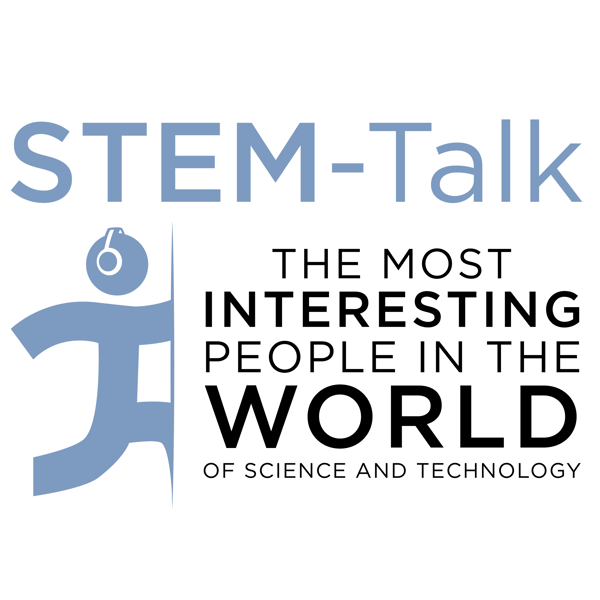Episode 66: Peter Neuhaus talks about exoskeletons, robotics, and the development of exercise technologies for space and Earth
STEM-Talk
Dawn Kernagis and Ken Ford
4.6 • 694 Ratings
🗓️ 19 June 2018
⏱️ 43 minutes
🧾️ Download transcript
Summary
Transcript
Click on a timestamp to play from that location
| 0:00.0 | Welcome to STEM Talk. |
| 0:01.1 | Stem Talk. |
| 0:02.0 | Stem Talk. |
| 0:03.0 | Stem Talk. |
| 0:04.0 | Stem Talk, where we introduce you to fascinating people who passionately inhabit the scientific and technical frontiers of our society. |
| 0:14.0 | Hi, I'm your host, Don Cornagus, and joining me to introduce today's podcast as the Man Behind the Curtain, Dr. Ken Ford, IHMC's director and chairman of the double secret selection committee that selects all the guests who appear on STEM Talk. |
| 0:24.7 | Hi, Dawn. Good to be here with you. |
| 0:26.8 | Today's episode features a colleague of ours, Dr. Peter Newhouse, who is a senior research scientist here at IHMC. |
| 0:32.6 | Peter is well known for his work on lower extremity exoskeleton devices and their applications for mobility |
| 0:38.3 | assistance. And this is for people with paralysis and parisus, gate rehabilitation, strength, |
| 0:43.0 | endurance enhancement, and smart exercise devices. Peter is an exceptional engineer who led |
| 0:48.5 | IHMC's team that traveled to Zurich, Switzerland in 2016 to compete in the international |
| 0:54.7 | Cybathalon, a competition in which people with disabilities or physical weakness |
| 0:59.4 | used advanced assistive devices, including robotic technologies, to compete against each other. |
| 1:04.9 | The competition drew 66 teams from 25 nations, and at the end of the day, IHMC's team walked away with the silver |
| 1:12.4 | medal in the powered exoskeleton competition. I was so happy for Peter, as we all were, and also |
| 1:18.1 | the rest of the IHMC team. And we'll talk about that some more in today's episode. But before |
| 1:22.3 | we get to today's interview with Peter, we have some housekeeping to take care of. First, we |
| 1:26.3 | really appreciate all of you who have subscribed to STEM Talk, and we are especially appreciative of all the wonderful |
| 1:30.6 | five-star reviews that are piling up on iTunes. As we announced in several earlier episodes, |
| 1:35.1 | the Double Secret Selection Committee has been continually and carefully reviewing our reviews |
| 1:38.8 | on iTunes, with an eye towards selecting the wittiest and most lavishly praised-filled reviews |
... |
Please login to see the full transcript.
Disclaimer: The podcast and artwork embedded on this page are from Dawn Kernagis and Ken Ford, and are the property of its owner and not affiliated with or endorsed by Tapesearch.
Generated transcripts are the property of Dawn Kernagis and Ken Ford and are distributed freely under the Fair Use doctrine. Transcripts generated by Tapesearch are not guaranteed to be accurate.
Copyright © Tapesearch 2025.

